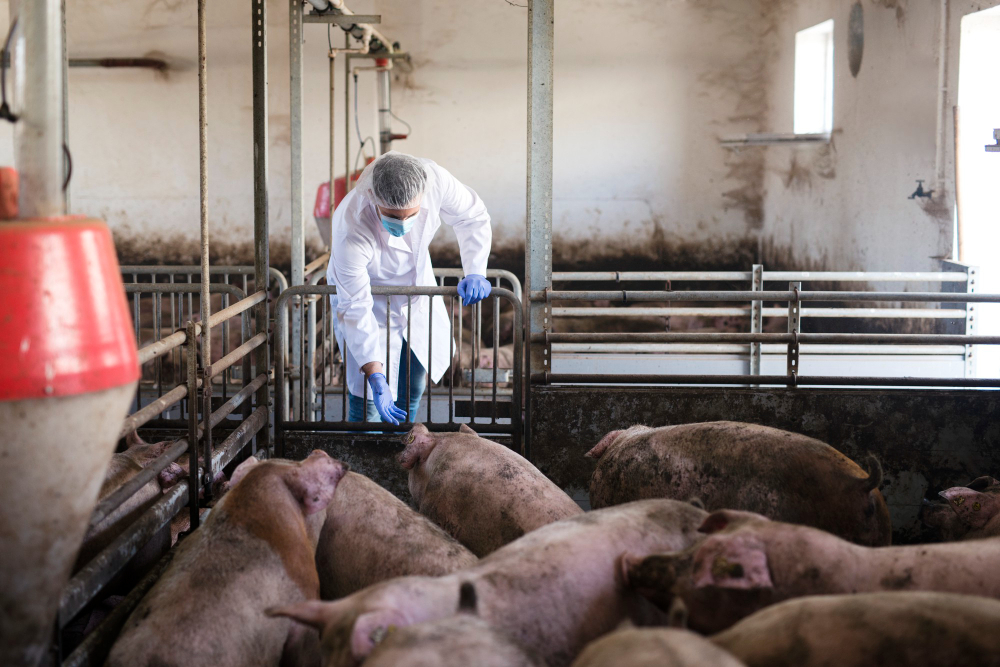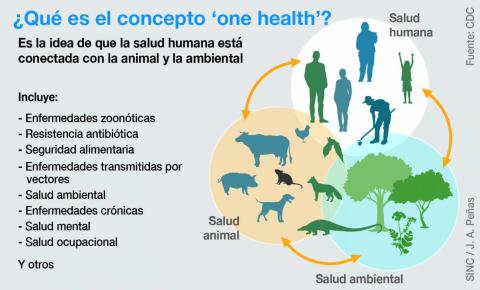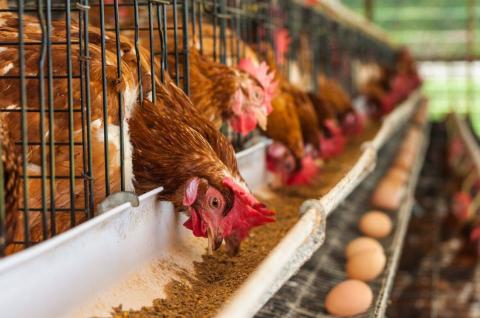Reactions: Confirmed case of swine flu in a worker on a farm in Catalonia
The European Centre for Disease Prevention and Control (ECDC) reported that on January 29th, Spanish authorities notified a possible case of human infection with swine flu virus A(H1N1)v in a worker from a Catalan pig farm. After being diagnosed with bronchitis, subsequent laboratory analyses confirmed it as swine flu A(H1N1)v. The ECDC informs that the patient has fully recovered, and to date, no new cases have been detected among close contacts or among the worker's colleagues at the farm.

María Montoya - cerdos
María Montoya
Researcher in the Viral Immunology: Therapies and Vaccines group at the Margarita Salas Biological Research Center.
The natural reservoirs of the influenza virus are aquatic birds. Different influenza viruses are capable of infecting birds and mammals, including humans and pigs, but they also infect sea lions, seals, horses, dogs... Influenza viruses that infect humans and pigs often have many similarities and can easily jump from humans to pigs. In fact, when analyzing the influenza viruses found on a pig farm, human influenza viruses are often detected. People who have more contact with these animals, such as farm workers, can transmit the viruses to the animals and become infected with the influenza viruses carried by the pigs. In fact, the virus of the first pandemic of the 21st century was a swine-origin influenza virus, an H1N1.
The risks to the community are the same as those posed by circulating influenza viruses. The problem arises when a swine or human virus 'recombine' with another influenza virus. This gives rise to new viruses, such as the pandemic H1N1 virus of 2009. To prevent community risks, the most important thing is to conduct epidemiological surveillance of circulating viruses on farms and of people who are in contact with sick animals. This way, necessary measures can be implemented to protect both animals and people.
Cases of swine influenza viruses infecting humans and vice versa are relatively common in people who have contact with infected animals. It should not be a cause for social alarm as long as we remain vigilant for possible new 'recombinant' viruses or new viruses with mutations. That's why it's so important to stay vigilant.
José Lliliane - cerdos
Is it likely that there will be more cases?
"It is not likely; sporadically, humans can become infected with swine influenza viruses circulating in pig farms, but it is not common. Likewise, personnel in contact with animals should maintain biosecurity measures and it is recommended that they receive influenza vaccination, which reduces the likelihood of infection. Furthermore, the capacity for person-to-person transmission is very small."
What are the risks for the community?
"Due to this low capacity for human-to-human transmission, it does not pose a special risk. The symptomatology can vary from mild to that produced by common flu, so it is not expected to constitute a relevant problem."
Are cases of humans affected by the A(H1N1)v virus common?
"The pandemic A(H1N1) virus has been circulating seasonally in humans since it emerged in 2009 and spread globally. Subsequently, humans have transmitted the virus to pig populations where it also circulates, now predominantly, along with the usual pig subtypes.
Swine influenza virus commonly circulates in pig populations. Sporadically, it can be transmitted to humans, mainly personnel in direct contact with the animals, via airborne route. It cannot be transmitted through consumption of pork products, so there is no risk of foodborne infection. When this jump occurs, it usually does not spread among humans; it has a low capacity for person-to-person transmission. The symptomatology is usually mild, or similar to common flu, which is why the origin of the virus often goes unnoticed.
A different case was what happened with the pandemic A(H1N1) influenza virus in 2009. This virus, which had segments from avian, human, and swine viruses, jumped to humans causing a pandemic. It spread globally and humans have transmitted it to the pig population. In 2021, a scientific article was published by a group in China that identified a circulating virus in pigs with pandemic potential, but since then, no outbreak in humans has been reported. However, it is essential to know the viruses circulating in pig populations to analyze their genome. At IRTA-CReSA, we study the evolution of swine influenza virus to analyze if it is capable of escaping vaccination or how vaccination affects this evolution. Thus, we have corroborated that vaccination reduces the circulation of the virus, although it does not prevent its replication, and, most importantly, that vaccination reduces the capacity for virus recombination when co-infection with two different viruses occurs. This recombination of the influenza virus, which is due to its segmented genome, is responsible, along with its genomic variability, for the difficulty in controlling influenza."
Gustavo del Real - gripe porcina Cataluña EN
Gustavo del Real
Senior scientist in the Biotechnology Department at INIA-CSIC
Swine influenza or swine influenza type A is endemic throughout the world and in Spain, Europe's leading producer of pigs, up to four different subtypes of this virus are circulating: H1N1, H1N2, H3N1 and H3N2. There is a certain affinity between swine and human influenza viruses and, in fact, there have been well-documented reciprocal transmissions for as long as this infectious disease has been known. When the genetic make-up of the different human and swine influenza viruses is analysed, this infectious promiscuity is clearly reflected in their respective phylogenetic trees.
A worker at a pig farm in Lleida has just reported a punctual infection with a swine virus of the H1N1 subtype. The infection presented moderate symptoms typical of influenza and the causative virus could be identified in the nasal exudate. This is an isolated case and no transmission of the virus to other persons close to the patient has been reported. The last case similar to this one in Spain occurred in 2022 in a person from Navarra who also had contact with infected pigs. Since 2011, 19 cases have been reported in Europe and a total of 73 worldwide. It should be emphasised that these episodes come to light by chance, so the true incidence of swine-to-human virus transmission is not known exactly.
In any case, this one-off case is a further warning that it is perfectly possible and not very unlikely that new strains of swine flu could be introduced into the human population on a stable basis, either directly or by combining with human strains, with the risk of causing a new pandemic like the one that occurred in 2009.
It is therefore essential to implement epidemiological surveillance programmes specifically designed to detect this type of zoonosis immediately in order to be able to stop and/or prevent outbreaks leading to epidemics or pandemics with incalculable consequences.



